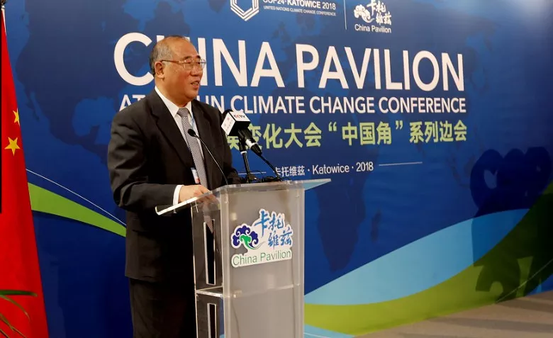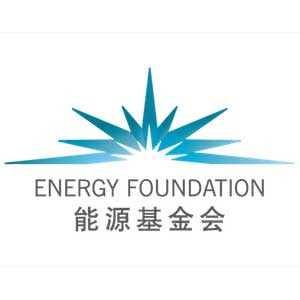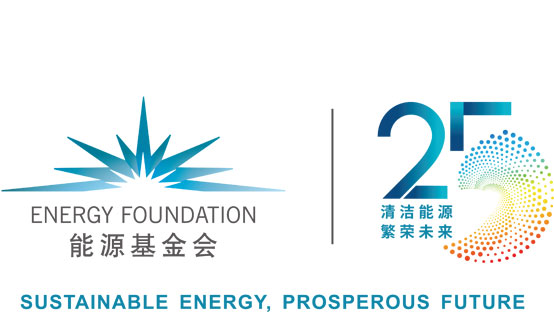The Chinese Carbon Market’s Instrumental Role
December 10, 2018, on the first day of high-level events in the second week of the 24th United Nations Climate Change Conference (COP 24), the first side event of the China Pavilion settled on the theme of carbon market. The event was hosted by the Chinese Ministry of Ecology and Environment’s Department of Climate Change, with supporters including the National Center for Climate Change Strategy and International Cooperation, the World Bank, the International Energy Agency, the Asian Development Bank, and Energy Foundation China.
“This shows how much attention the international society and the Chinese government are paying to carbon markets,” said Xie Zhenhua, China’s Special Representative for Climate Change Affairs. This is the eighth consecutive carbon market side event at the China Pavilion of the COP. Eight years have passed since China started its carbon market pilot program. By now, China is approaching the first anniversary of the launch of its national carbon market.

Xie Zhenhua, China’s Special Representative for Climate Change Affairs | Source: The Official Website of the Ministry of Ecology and Environment
As a frequent participant in these China Pavilion events on carbon market, I have increasingly noticed a wide-spread consensus on its importance of in dealing with climate change. The future direction and role of the market are also clearer than before.
In terms of climate change, 2018 has been a grim year. “We are reminded of the catastrophic consequences of climate change by extreme weather events and leading scientists’ reports on carbon emissions trends from around the world,” Dr. Fatih Birol, Executive Director of the International Energy Agency (IEA) said in a serious tone, "however, this urgency and desperateness is not reflected in the trend of emission." The latest data from the IEA shows that the decoupling of economic growth and carbon emissions that developed countries had shown in the past five years have been reversed this year: instead, their emissions will rise for 2018. Even though the number has only increased by 5 percent, it’s still a worrying situation for the planet.

Dr. Fatih Birol, Executive Director of the International Energy Agency | Source: Dialogue 2049
Under these circumstances, the leaders and experts at the conference had high hopes for carbon market. Laura Tuck, World Bank’s Vice President for Sustainable Development, cited the Bank’s latest report on carbon pricing:
“As of 2018, 51 carbon pricing initiatives have been implemented or are scheduled for implementation, covering 20 percent of annual global GHG emissions. For these countries and regions, emissions trading systems and other carbon pricing policies are important reduction measures.”

Laura Tuck, Vice President of the World Bank | Source: The Official WeChat Account of the Beijing Environment Exchange
Li Gao, Director-General of the Department of Climate Change, Ministry of Ecology and Environment, spoke about China’s progress on building a national carbon market in his confidence boosting keynote speech. After many discussions and revisions, the country is close to publishing the Interim Measures for the Administration of Carbon Emissions Trading, which will act as an all-important legal basis for the carbon market. Supporting rules and regulations will also be rolled out soon. At the same time, construction of relevant infrastructures is making steady advances, acting as an important pillar propping up the operation of the carbon market system. They range from corporate reporting system for greenhouse gas emissions to the quota registration system, which will all be in place before the national carbon market goes online.

Li Gao, Director-General of the Department of Climate Change, Ministry of Ecology and Environment | Source: The Official WeChat Account of Beijing Environment Exchange
The National Center for Climate Change Strategy and International Cooperation has played an important role in the construction of carbon market infrastructure. Its director Xu Huaqing talked extensively about the work they did on setting up the reporting system and relevant training, amongst other things. In addition to the set up and progress of the carbon market itself, the side event also discussed about the links between the carbon market and other policies on energy conservation and emission reduction.
Professor He Jiankun from Tsinghua University pointed out that one of the innovations of the carbon market mechanism is to replace and improve the methods for controlling total energy consumption with establishing a total carbon emission cap. Both Professor He and Mr. Xu believe that carbon trading should be integrated with or be a spearhead of other environmental rights related transactions, which include the tradable green certificates and the transaction of energy savings in the power industry. We believe that sensible top-level designs would lead to better integrations of the various policies of energy conservation and emission reduction, thereby avoiding conflicting measures from different government agencies. The desired outcome would be a simplification of corporate compliance process and a reduction of compliance costs.

Participants speaking at the event | Source: The Official WeChat Account of the Beijing Environment Exchange
Talking about the Chinese carbon market at a side event of U.N. climate conference inevitably led to discussions about its impact around the world. China’s national carbon market is the world’s largest. This means it will have a strong positive spillover effect. Its success will inspire confidence across different regions. And its experience and lessons can also be of valuable reference for other countries. I believe that China should actively conform to international monitoring, reporting, and verification systems for carbon emission in terms of their set up and transparency standards. By doing do, China will enhance its international credibility and competitiveness. While there is no formal plan to establish a connection between regional carbon markets, many parties have come together to discuss this idea with regard to technology and exchange of information. This is especially the case among Asian carbon markets in China, Japan and South Korea. These efforts could form the basis for discussion of transnational carbon markets in the future.
The carbon market is such a complex undertaking that its construction and operation will take perseverance and patience. At the event, experts talked about the experience of setting up carbon markets around the world. The E.U. and Californian carbon markets currently in operation have shown us that mature emissions trading systems are capable of releasing effective emission reduction signals in the long term. Such markets all went through several stages of adjustment and improvement.
I believe that while paying attention to the progress of setting up China’s carbon market, we should not overlook what happens after it comes online: timely capture of relevant data and information for an evaluation of design and operation of the market. We need to have an open and transparent system, so that stakeholders can have effective communication and fully participate in any further reform of the market. Through the release of medium and long-term price signals in advance, such a mechanism will better enable market participants to obtain information and propel enterprises to strive to adopt emission reduction technologies.




